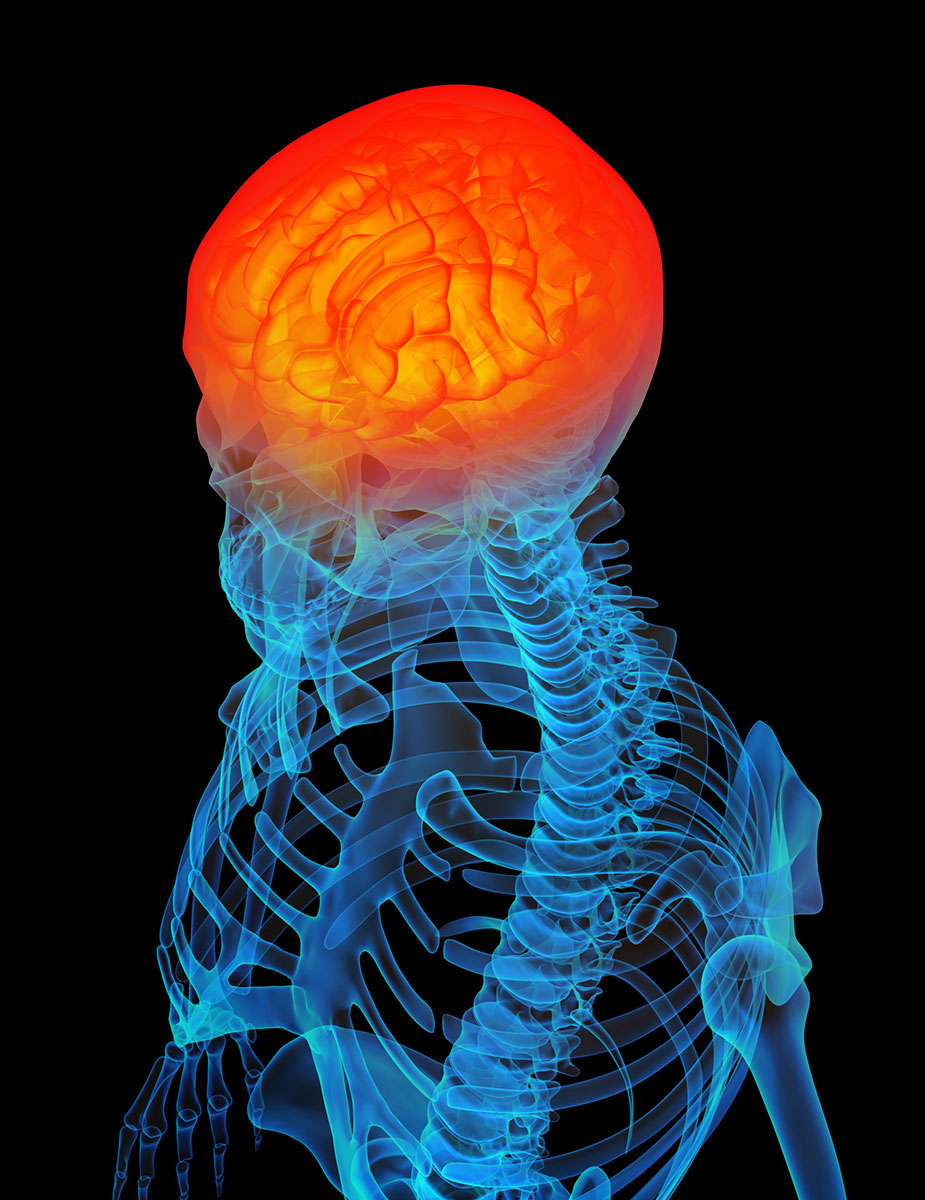Concussions occur much more often than we think. In 2014, the CDC reported approximately 2.53 million traumatic brain injury (TBI) related visits to the emergency department; 812,000 were pediatric cases. TBI can be a result of any serious trauma to the head, but it is often associated with playing sports. In fact, sports account for the second leading cause of TBI in people aged 15-24 years1. Even with the growing awareness around concussion, it still gets underreported. Student athletes may hide their concussions for fear of losing playing time. However, chiropractors can help manage concussions. By providing care to those with TBI, we can help them return to play in a safer way.

Angela Nguyen
One of the most important aspects of concussion is the process of recovery. There are similarities seen with TBI, whiplash, or any other orthopedic trauma including dizziness, headaches, nausea and changes/difficulty in brain function. However, these symptoms may not be exclusive to just TBI and whiplash. Donovan et al. suggests that the symptoms can be a result of physical, but also psychological stresses in general. Because of this, the likelihood of recovery depends not on the mechanism of injury, but rather, the patient’s perspective and expectations of their recovery process. Two variables associated with poorer outcomes were the belief that the patient would not get better, and the use of passive coping strategies2. Patients will often wonder whether or not you can help them. The first step in helping someone with a concussion might be helping them believe that they are capable of getting better. It might involve education, love and a lot of support throughout the recovery process.
The second step is to address the actual pathophysiological component of concussion. Concussions result in neurological impairment. However, according to imaging, there is no actual cell death, just neurological dysfunction3. Sounds like a chiropractic problem, right? When there is a certain amount of trauma to the head, it causes brain and therefore neuronal dysfunction. The impact creates mechanical deformation of the neuron, causing a change in the flow of ions coming in and out of the cell. This results in widespread depolarization, causing temporary confusion, vision and balance problems.
In addition, the impact causes an increase in calcium influx. The excess calcium overloads the mitochondria, preventing ATP synthesis through oxidative phosphorylation. Consequently, the body must instead rely on the anaerobic production of energy. The anaerobic system produces significantly less ATP, causing an energy deficit. This deficit is magnified by the decreased blood supply to the brain due to the trauma.
As chiropractors, we deal with the nervous system. In these traumatic injuries to the brain, the nervous system sustains quite a bit of damage. However, the key is that this a “functional reversible deficit3.” If we can restore or at least increase normal function within the nervous system, we can help minimize the detrimental effects of concussion.
Research on chiropractic and concussions is limited, but based on the research available, chiropractic might make a difference for someone suffering from a concussion. Chiropractors are often the first healthcare provider seen by those suffering from a concussion. Symptoms of TBI usually occur with delayed onset, and can include headaches and neck pain, something chiropractors address on a daily basis4. We can follow return to play concussion protocols and use measurement tools such as the sport concussion assessment tool (SCAT) to monitor concussions, but there is still no standardized guideline for chiropractic management of TBI.
It would be of great benefit to explore what the effects of a chiropractic adjustment are on a patient with a TBI. It would also be interesting to research which types of techniques provide the most beneficial outcomes for patients. Most of the research done on chiropractic and concussion addresses the competency of chiropractors to assess and diagnose someone presenting with a concussion. However, the amount of research on what to actually do after diagnosis is limited.
There is a need for continued research in this area to develop a clinical guideline that all chiropractors can follow. A trauma that occurs so often with such profound effects warrants more in-depth research. With continued research and awareness about concussions, we can make progress toward better care for our patients.
References:
- Gessel LM, Fields SK, Collins CL, Dick RW, Comstock RD. Concussions among United States high school and collegiate athletes. J Athl Train [Internet]. National Athletic Trainers Association; 2007 [cited 2019 Jul 20];42(4):495–503. Available from: ncbi.nlm.nih.gov/pubmed/18174937
- Donovan J, Cassidy JD, Cancelliere C, Poulsen E, Stochkendahl MJ, Kilsgaard J, et al. Beyond the spine: a new clinical research priority. J Can Chiropr Assoc [Internet]. The Canadian Chiropractic Association; 2015 Mar [cited 2019 Jul 20];59(1):6–12. Available from: ncbi.nlm.nih.gov/pubmed/25729080
- Marshall CM. Sports-related concussion: A narrative review of the literature. J Can Chiropr Assoc [Internet]. The Canadian Chiropractic Association; 2012 Dec [cited 2019 Jul 20];56(4):299–310. Available from: ncbi.nlm.nih.gov/pubmed/23204574
- Johnson CD, Green BN, Nelson RC, Moreau B, Nabhan D. Chiropractic and concussion in sport: a narrative review of the literature. J Chiropr Med [Internet]. Elsevier; 2013 Dec [cited 2019 Jul 20];12(4):216–29. Available from: ncbi.nlm.nih.gov/pubmed/24396325
This article first appeared in the August 2019 issue of Lifelines, the Life West student magazine.


